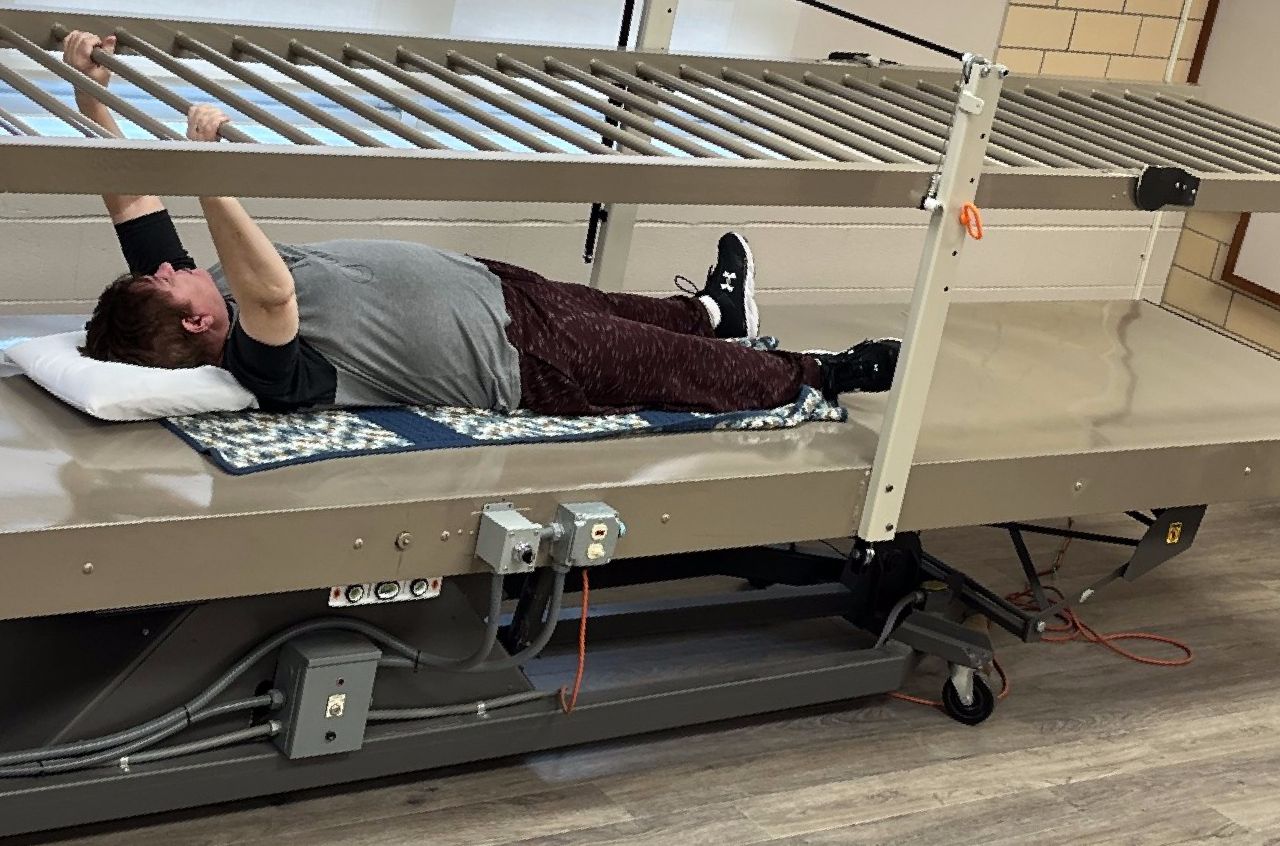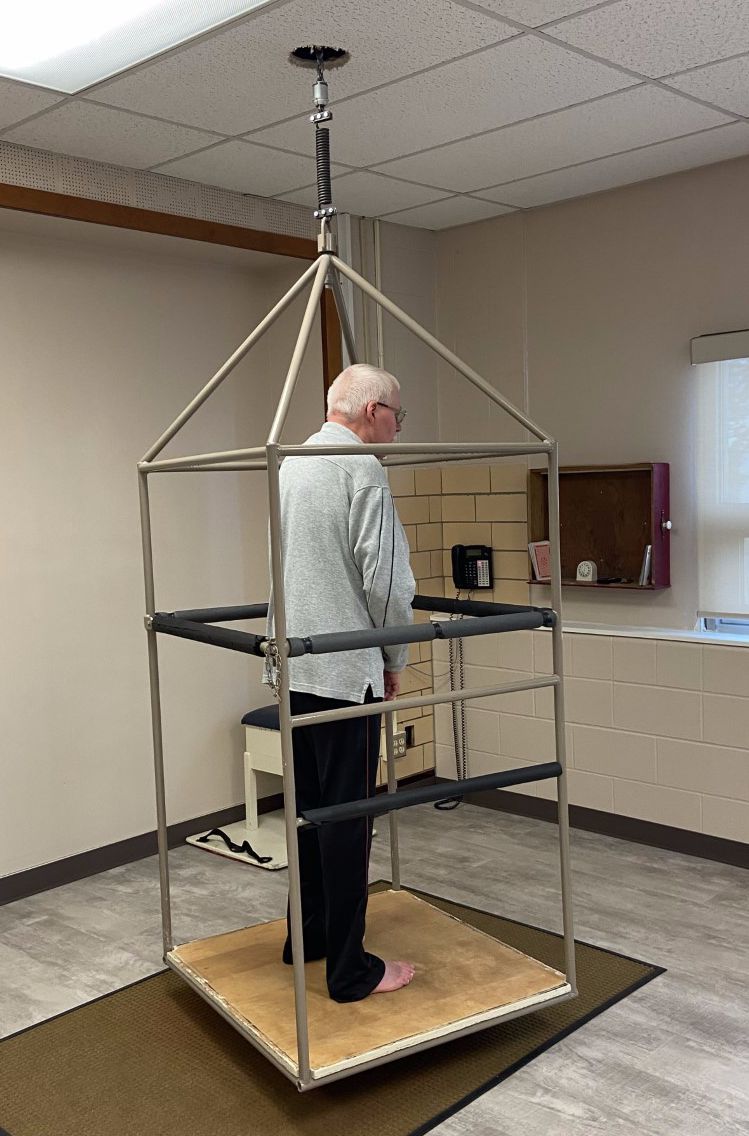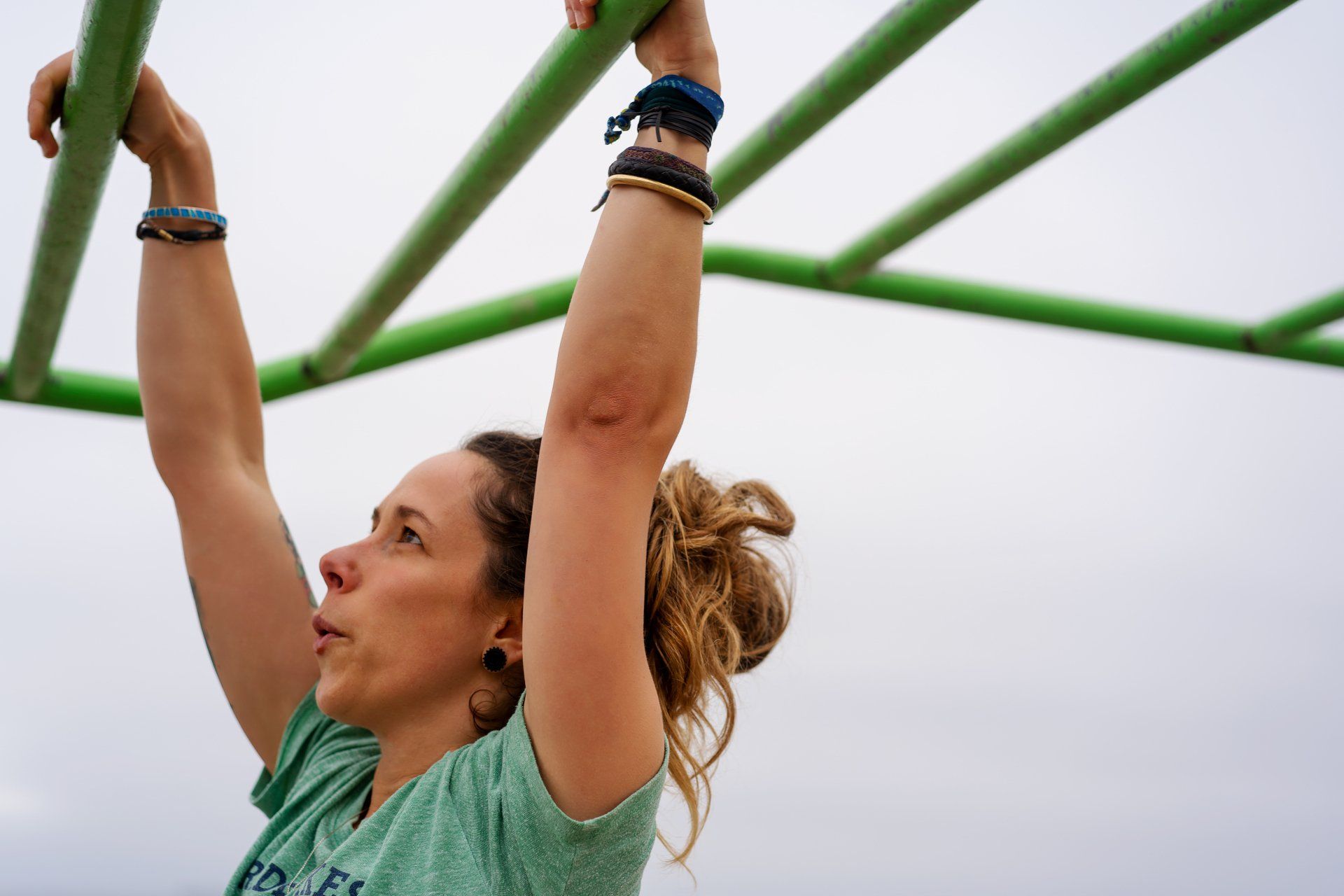
SUPINE LADDEr
When applied over a period of time, the Supine Ladder is designed to introduce movement to the paretic shoulder/arm/hand when used in cooperation with a downward tilt.
As the paretic limb responds, and volitional movement occurs, the machine can be made more challenging by lessening the degree of tilt.

This piece of motorized equipment also improves “range of motion” on the upper extremities; which in turn improves flexion, extension, grasp & release.
When used without the ladder, the slide can be a valuable tool for crawling, adjusting the decline to entice a child to move forward on his own.
BALANCE BOX

The Balance Box is used to develop balance, posture, coordination, and muscle tone; a duty of the cerebellum.
The cerebellum is the large hind part of the brain that receives sensory impressions from the eyes and ears along with impulses from joints and muscles. The cerebellum, by design, is in perpetual tune with our center of gravity, keeping us constantly within our basal support, which protects us from falling.
This is done without conscious effort or thought, and is an extremely intricate process of the cerebellum.
When a person is SWINGING or SPINNING in all directions, inner ear fluid is
moving and sending information apprising the cerebellum of where
the body is in space.
The Balance Box specifically stimulates the cerebellum - slowly and safely rousing it back to the finely tuned computer it is capable of being.
TRAMPOLINE
The trampoline is used to encourage development of the “Proprioceptive System.” A “proproceptor” is a specialized sensory nerve ending which monitors internal changes in the body brought about by movement & muscular activity.
Proprioceptors located in muscles & tendons transmit information to the brain so it can coordinate muscular activity. When a person jumps, all the muscles, ligaments, tendons, and bones in the body are stimulated. This stimulation tells the brain which areas the movements originate from. This system is needed in order to realize where your body parts are in relation to movement.

BRACHIATION
'The Overhead Ladder'

The overhead ladder is used for Cross pattern walking and Brachiating. Brachiation is a form of locomotion in which we use only our arms to swing from Point A to point B. Body weight is singly supported under each arm.
Brachiating can be especially valuable to children & adults with ADD, Autism, L.D., Down’s syndrome, Cerebral palsy, and brain injury, etc.
Often these folks have smaller chests giving them reduced lung capacity ~ which in turn can mean less oxygen (O2) intake. O2 is the food of the brain - essential for function. They also suffer from respiratory illnesses easier than others; and some breathing issues can have a negative impact on cognition and speech.
The results from BRACHIATING are: greater lung capacity, cortical opposition, eye/hand coordination, manual competence, and stronger hand/finger grasp. All necessary skills for neurological organization.

Hanging from a rung for 60 seconds or more is a prerequisite to brachiating.
All Rights Reserved | Center For Neurological Development | Site by: Midnet Media